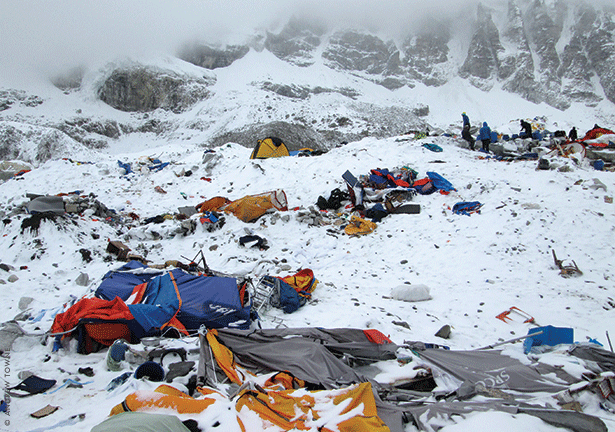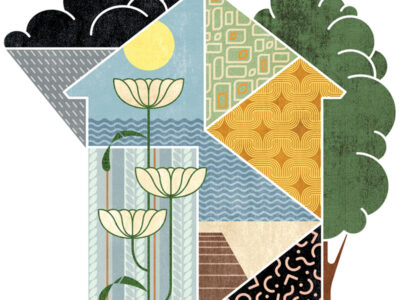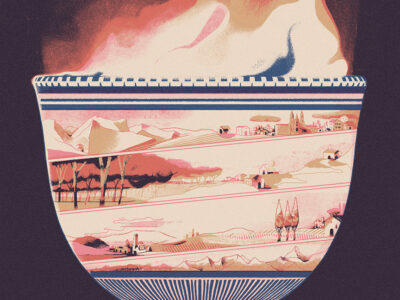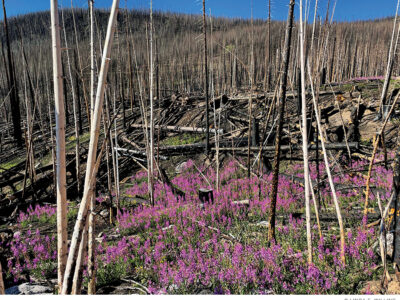
In base camp on Mount Everest’s deadliest day.
By Andrew Towne | First came the earthquake. Beneath the tarp of our climbing team’s lunch tent, the Khumbu Glacier’s rocky moraine shuddered with a sickening waver. It felt as though I was on the edge of a trampoline while someone else jumped in the center. A teammate recognized it and we moved to the tent’s door see what was happening. I worried that a crevasse might open up in the glacier under our feet, and so I stepped farther out.
I looked east, toward Mount Everest, then south, then west. When my eyes turned toward the north, I saw it: a rush of snow at least a quarter mile high racing toward us from the ridge between Lingtren and Pumori, a pair of peaks that rise about 5,000 feet above the head of the glacier. Avalanches around base camp are common, but never large enough to reach all the way to base camp.
This one looked different.
I worried about what the sickening cloud might be carrying toward us, and so I ran behind the nearest medium-sized boulder. I curled up into a fetal position and starting breathing hard. I focused on my sense of touch, waiting for the snow to start burying me before taking one last deep breath.
The snow came, but I only got a dusting. My teammates were also spared, but many others were not. The center of base camp—the length of about two football fields to our north—was destroyed, including the volunteer-staffed Himalaya Rescue Association hospital. Since our team’s camp was undamaged and near the main trail, we became the de-facto replacement clinic.
Our expedition leaders and the doctors got us organized, and patients began flooding in—some limping but most borne on ladders, mattress pads, and other makeshift stretchers. Doctors and medical supplies from other expeditions came too, and we converted our communication and dining tents into triage centers.
My teammates and I helped as we could—gathering sleeping bags and hot water bottles for the patients, assisting the doctors with splints and bandages, and delivering food and water as the hours wore on. One patient had a broken pelvis, dislocated elbow, and shattered hand, but we were able to forestall frostbite on his toes by loosening his bandages and putting a hot water bottle between his feet. Another had a three-inch cut down to the bone of his forehead. As I cleaned his wound, he kept joking in broken English, “I look good, yeah?” A third fared worse, with compound fractures in both of his legs. When he was lying on his back and we lifted up his sleeping bag, we saw both of his legs at right angles to where they should have been. He received a heavy dose of pain medication and we wrapped both of his legs to two hiking poles, using sections of foam sleeping pad for insulation.
By midnight, the doctors had visited every patient at least twice and told us we should get some sleep in case bad weather the next day prevented helicopters from evacuating the patients. It was eerie to lie in my tent, trying to sleep, when I knew of the suffering in our dining tents just 20 feet away, but exhaustion took hold. I awoke to the sound of the first helicopter approaching at daybreak.
By noon the next day—less than 24 hours after the earthquake and avalanche—the last injured patient flew out of base camp. We spent the afternoon cleaning blood off of our tents and helping other camps dig out of the rubble.
That second evening it started to sink in. One of my teammates had lost a good friend who was climbing with a different expedition. My Sherpa climbing partner had lost his cousin, and was unsure whether his nephew with a severe head trauma would survive, even after medevac, in the crowded Kathmandu hospitals. Many of our Sherpa colleagues had lost their homes in the earthquake, and the death count in Kathmandu had passed 7,000.
A story went around camp about a medic who had been standing with a teammate, watching an avalanche fall from the northeast, when the much larger avalanche pummeled the two of them from the northwest. One was left standing. The other died after being hit by a boulder or a blast of air that tossed his body more than 300 feet across the glacier.
We fell asleep worrying about our teammates at Camp 1 and Camp 2. They were huddling in the shadow of three of the world’s highest mountains, praying that an aftershock didn’t let loose an avalanche that would be their final blow.
By noon on the second day, the last climber was safely evacuated off of the upper mountain. The route through the treacherous Khumbu Icefall, which separated them from base camp, had been destroyed in the earthquake, leaving helicopter descent their only option. Our team’s efforts to summit officially ended, and we began to pack up camp.
Two days later, we reached Pheriche, a small village of potato and buckwheat farmers that transforms into a rest stop for trekkers during the climbing season. We slept in tents in a pasture—seemingly safe from earthquake and avalanche—and I could feel my body finally begin to unclench from the stress that had gripped it for four days and nights. Helping some Sherpas rebuild their homes during the long walk down the valley was as much therapy for us as it was charity for them. The week it took us to walk out gave us all a lot of time to process what had happened.
Everest had just had the deadliest year in its recorded history, for the second year in a row. The 2014 season had been tragic enough, with a death toll of 17 falling most heavily on the Sherpa support teams who ferry gear over the Khumbu Icefall. Now this massive earthquake had leveled entire communities while turning UNESCO World Heritage sites into dust. Swathes of Kathmandu had been reduced to rubble, and nobody seemed to know just how far the destruction had swept into the country’s beautiful valleys. As a group we started thinking about what we could do, even as we struggled to make sense out of what we had gone through.
First, I thought about what had gone right.
My teammates had answered the call. A business executive had followed one of the doctors on his makeshift rounds, writing down the diagnoses for each patient on a piece of paper to accompany them to Kathmandu. A former Marine helped carry multiple bodies away from our camp to a place where they could be handled with respect and dignity until it was time for burial. Multiple guides and Sherpas ran into the dangerous and damaged Khumbu Icefall to investigate potential descent routes for our teammates higher on the mountain. Our expedition’s leader had made it clear that our safety and well-being was his first priority, and that he did not expect us to sign up for overnight shifts in the head-injury tent, recording times of death. He was on the verge of tears as we each looked him in the eyes and signed up to share the burden.
In the coming weeks, many of us continued to do that. One of my teammates left our expedition and found his way to the village of Thame, where he stayed for two weeks to organize a crowd-funding campaign to rebuild the entire village. Within a week, he had raised more than $40,000, which he personally ensured got to those with the greatest need or to those responsible for the long-term best interests of the community. Another returned to Alabama to organize a Hike for Nepal, and yet another has led multiple fundraisers in his home state of Colorado. I continue to promote international goodwill with Youth For Understanding—the beneficiary of all of the money I raised via this 2015 Everest Expedition.
But redistributing capital is not the only way to make a difference in the world. And neither, for all the emphasis it gets, is leadership.
One of the doctors who had saved so many lives at our camp—who waited until after she’d treated 25 seriously injured patients to sew up her own wound, without anesthesia—later told us how lucky we had been that the people who took charge of the situation also happened to be people who knew how to respond to it. More than once, she had been in crisis situations where the person who jumped up and started barking orders was not the one with the best plan. In her experience, that was a recipe for disaster. Without lengthy qualification, she complimented our followership, which had crucially enabled us to get things done quickly.
This turned my thoughts toward home, and how similar the disaster felt to the Red River flood of 1997, which destroyed my hometown of Grand Forks, North Dakota when I was in ninth grade. Just as we had worked around the clock then, filling sandbags for the levee, here we had worked late into the night among the ruins of base camp, doing everything we could to prepare for helicopter rescue or another day helping patients.
I remembered the esprit de corps that came with fighting, enduring, and surviving the flood together, and I smiled as I looked around at our team in Pheriche. We had survived the avalanche, and we had fought its outcome as best we could, together.
Andrew Towne L’15 WG’15 is studying for the Minnesota bar exam.




